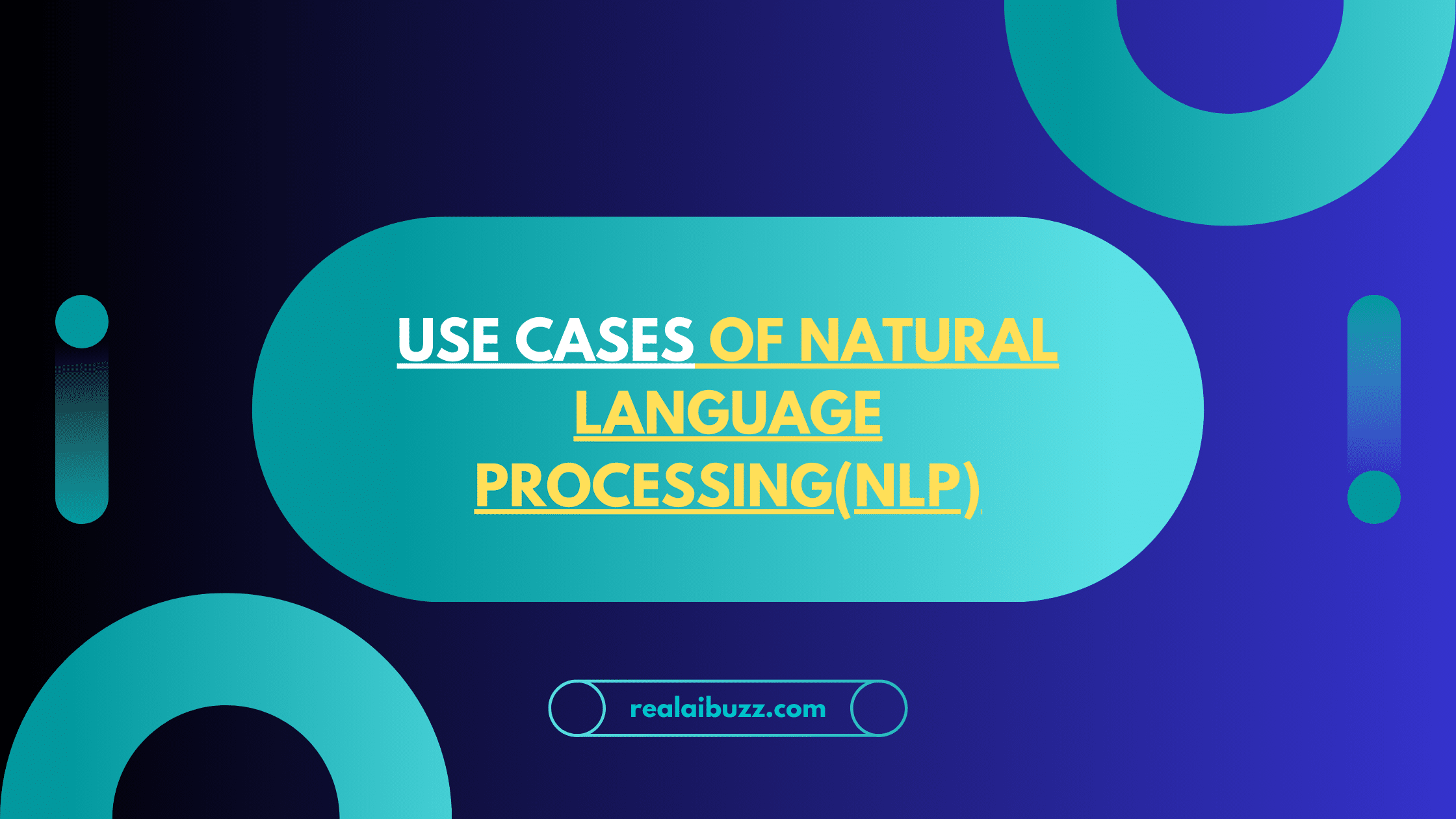Use Cases of Natural language processing(NLP)
Use Cases of Natural language processing(NLP)
Use Cases of Natural language processing(NLP)
Use Cases of Natural language processing(NLP)
Use Cases of NLP
Natural language processing is the driving force behind machine intelligence in many modern real-world applications. Here are a few examples:
Real "AI Buzz" | AI Updates | Blogs | Education
#1. Spam detection:
You may not think of spam detection as an NLP solution, but the best spam detection technologies use NLP’s text classification capabilities to scan emails for language that often indicates spam or phishing. These indicators can include overuse of financial terms, characteristic bad grammar, threatening language, inappropriate urgency, misspelled company names, and more. Spam detection is one of a handful of NLP problems that experts consider.
#2. HR Processes:
Over the days, more businesses have recognised the value NLP adds to various commercial tasks. By utilising practical, tried-and-true techniques, NLP may help you achieve more sales, better customer or employee connections, or better communication internally and externally. NLP will assist you in adding depth to your training by focusing on beliefs and behaviours. In addition, NLP can make learning more sustainable to get the most out of your investment.
#3. Machine translation:
Google Translate is an example of widely available NLP technology at work. Truly useful machine translation involves more than replacing words in one language with words of another. Effective translation has to capture accurately the meaning and tone of the input language and translate it to text with the same meaning and desired impact in the output language. Machine translation tools are making good progress in terms of accuracy. A great way to test any machine translation tool is to translate text to one language and then back to the original. An oft-cited classic example: Not long ago, translating “The spirit is willing but the flesh is weak” from English to Russian and back yielded “The vodka is good but the meat is rotten.” Today, the result is “The spirit desires, but the flesh is weak,” which isn’t perfect, but inspires much more confidence in the English-to-Russian translation.
#4. E-commerce and Retail:
NLP-powered chatbots with artificial intelligence are ubiquitous and spreading quickly in retail and eCommerce. However, this is only the tip of the iceberg. NLP has significantly greater potential for assisting shops in going above and beyond in discovering and exploiting user intent to increase sales volume and income.
Semantic search refers to a way of searching that may be used to locate keywords, comprehend the context of the search, and make suggestions. NLP-powered chatbots with artificial intelligence are ubiquitous and spreading quickly in retail and eCommerce.
#5. Virtual agents and chatbots:
Virtual agents and chatbots: Virtual agents such as Apple’s Siri and Amazon’s Alexa use speech recognition to recognize patterns in voice commands and natural language generation to respond with appropriate action or helpful comments. Chatbots perform the same magic in response to typed text entries. The best of these also learn to recognize contextual clues about human requests and use them to provide even better responses or options over time. The next enhancement for these applications is question answering, the ability to respond to our questions—anticipated or not—with relevant and helpful answers in their own words.
#6. Text summarization:
Text summarization uses NLP techniques to digest huge volumes of digital text and create summaries and synopses for indexes, research databases, or busy readers who don’t have time to read full text. The best text summarization applications use semantic reasoning and natural language generation (NLG) to add useful context and conclusions to summaries.
Read More









Leave a Reply